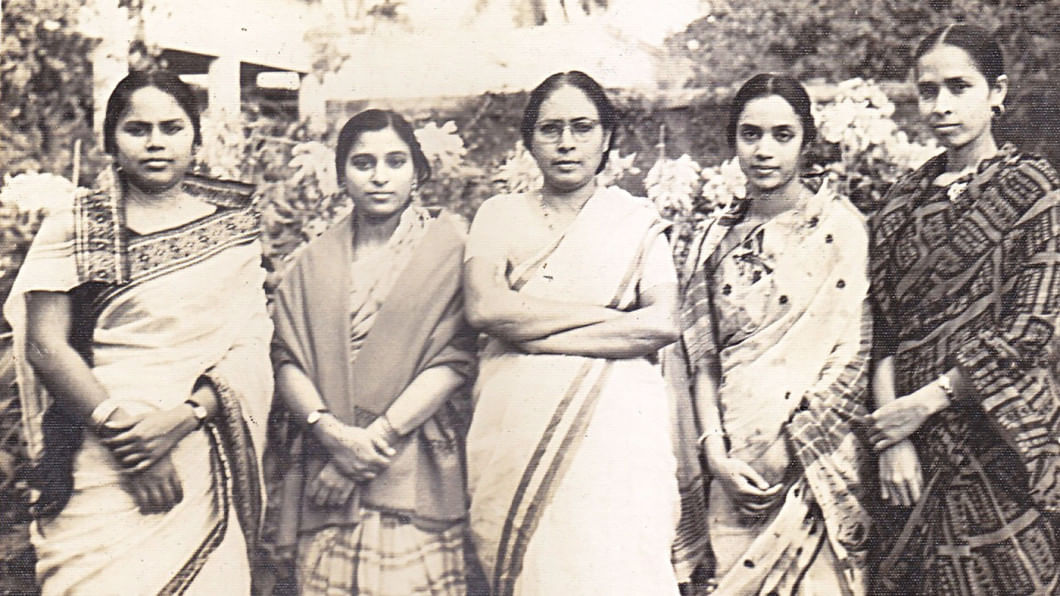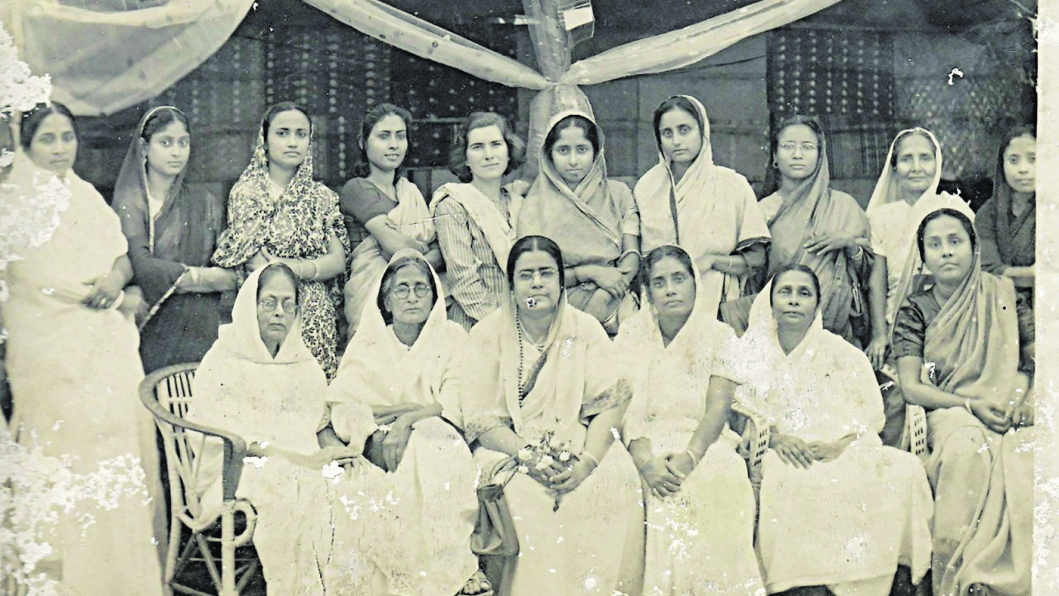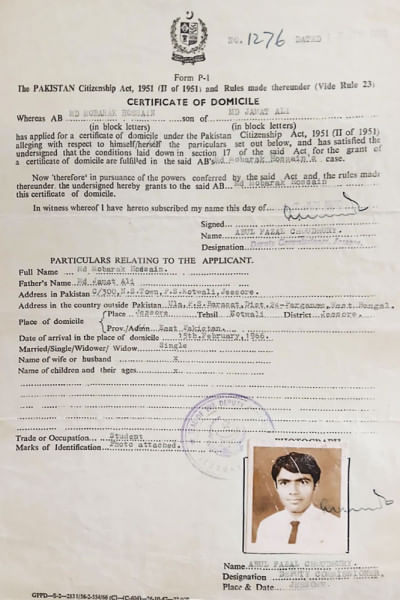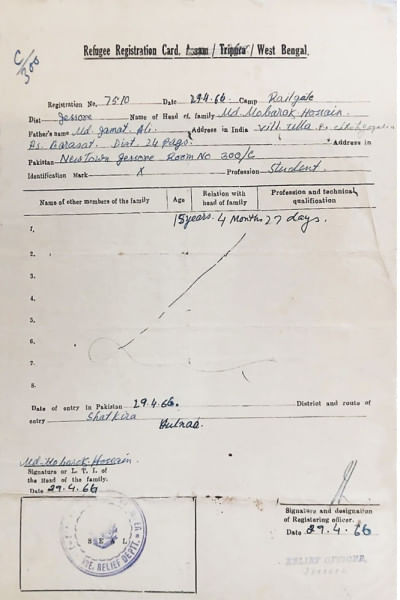The 1947 Partition of South Asia is usually associated with divisions, disruption, and the melancholia of displacement. This is the dominant narrative that pervades the literature on Partition today, even after 75 years have passed. Yet the 1947 Partition was also about new social transformation and institutional frameworks. Pakistan was a new state created out of old British India. India too had new visions of state-building which were injected into its planning in its initial years. But the really intricate processes of social transformation took place on the ground, in the interstices of a society undergoing tumultuous change. The changes manifested themselves more clearly and acutely in individual stories or family and community relations than they did at the national level. I will relate two such stories. The first is about my mother, Basanti Guhathakurta, and the girls' school she helped build in Gandaria, an old quarter of Dhaka. The second is about a family friend, Mobarak Hossain, who migrated from West Bengal to East Bengal as a result of Partition dynamics.
Basanti Guhathakurta, born in 1922 and originally from Vikrampur, later relocated to Fatullah, Narayanganj, and married Jyotirmoy Guhathakurta in 1948. She joined Gandaria Girls' High School (later renamed Maniza Rahman Girls' High School) as Headmistress and stayed there until her retirement in 1988. At the time of Partition, Gandaria was a neighbourhood inhabited mostly by upper middle-class Hindus. Gandaria school also reflected that composition in its students as well as faculty members. The Partition witnessed the mass exodus of the Hindu population from East Bengal into India and the reverse migration of Muslims from India into the new state of East Pakistan. Given the higher literacy among the Hindu population in colonial Bengal, this meant that many of the local schools in East Bengal lost their students and teachers, leaving behind a gap that could not be filled immediately.
But despite the mass exodus in the neighbourhood of Gandaria, the education scene remained stable, possibly because of the two stalwart educationists heading the two high schools in the area: Sudhir Chandra Ray of Gandaria High School for Boys and Basanti Guhathakurta of Gandaria Girls' High School. Though both came from Hindu families, both chose to remain in East Pakistan at the helm of their respective institutions. Dr Shamsul Bari, a veteran resident of that area, reminisced about the time:

"Because of the tumultuous times, it was expected that there would be major disruptions in the educational sector, but there weren't, because of the continuous presence of the two schools and the beacon of light they could cast on future generations.
I myself was mortified to see my school friends leave for India, often silently, without telling any of their neighbours. But I also saw my father, M.A. Khaleque, who, as the President of the School Board at Maniza Rahman Girls' School, gave great impetus to women's education and generously supported Basanti Guhathakurta during those times. He, like many others who lived through Partition, felt the necessity to build the new state of Pakistan through the education of future generations—an education which would be deeply ingrained in the composite and inclusive culture of religious coexistence. Hence, unlike the political divisiveness that is habitually imagined in the context of Partition, the imagined society of the elites of the new country was focused on an education based on equanimity that would lend vibrancy and vitality to their future generations. What better way to do it than through the very educational institutes that had organic roots in our social history?"
Maniza Rahman Girls' School faced enormous challenges in this journey, but under the guidance of well-wishers like M.A. Khaleque, Dr Wahid, and women leaders like Asha Lata Sen, it received enormous impetus and support to take on this immense task. I grew up hearing stories from my mother about how she dealt with the dwindling number of students and faculty at her school in the initial years. The demography of the Gandaria neighbourhood was fast changing. The Hindu-owned households were gradually being sold off, and the wholesale iron traders of Dholai Khal were moving into the area. But they were a conservative community who did not believe in higher education for their daughters.

My mother, along with several teachers, strategised to bring those girls to school. They went in groups, knocked on each door, and asked the parents to send their daughters to school, assuring them of their safety and security. The school also had an escort service for girls who lived at some distance and could not pay enough for rickshaw fares. The school had a troop of dais or ayahs (women assistants) who would collect each girl from their homes (one dai for each area), escort them walking to school, and similarly take them home after school. Midday meals were also given to the girls at the school.
My mother dealt with the dearth of faculty members in different ways. Muslim women were only beginning to receive higher education, but my mother could not afford to recruit trained teachers, so she would take the help of any young woman who was reasonably educated and give them hands-on training. Several of my aunts, once they had graduated or at least passed their Intermediate, were recruited to fill in the gaps. I had heard that Hena Das, the communist leader, who was once in a dire strait as no one would offer her a job because of her political leanings, was also provided with a teaching post at the school for a brief while. 'Abeda apa', a student of that school herself, married the left leader Nasim Ali who had to take to underground politics most of the time in East Pakistan, became a teacher initially for the sheer survival of her family but later turned it into a lifelong career. Many girls from the neighbourhood who had just passed out from schools or colleges in the vicinity would be invited to teach at the school until the time the school itself had recovered from the blow of Partition. It is amazing how history and social historians have neglected this aspect of women's contribution in transforming our societies!

As mentioned before, the school became a focal point not only for text-based education but also a crucible for nurturing culture and creativity. It included classes in songs, painting and instrumental music, along with time spent in getting to know nature through gardening, cooking, and other arts and activities. The whole idea was to broaden the horizons of the girls who were expected to play an important role in transforming our societies in the better interests of future generations.
But there is another angle that needs further investigation in the education sector and that is the education of youth who came in as migrants from India and the process of inducting them into the education system of the newly created nation. We can hear about this from the stories of migrants who came in from India. One such person was Mobarok Hossain, a family friend who passed his Secondary Examination from Barasat in West Bengal and had entered for his Higher Secondary studies at Bangobasi College, Calcutta. But during the 1965 Indo-Pak war his parents, who had gone to see their eldest son, now working in Pakistan, became trapped due to the cessation of communication between the two countries. It was only in early 1966 that his parents could return to India. On their return, jarred by their experience, they instructed Mobarok to go to Pakistan and give company to his brother. His mother's words were that one needs to have a family when in a foreign country (bidesh). Mobarok could not disregard his mother's words and set off to East Pakistan to stay with his eldest brother, who was then working in Jashore.

In Jashore, Mobarok tried to gain fresh entrance into the Higher Secondary level at Michael Madhusudan Dutta College (M.M. College). But he was faced with a problem. Mobarok's journey into East Pakistan occurred at the spur of the moment, without proper planning. Given the suddenness of his parents' decision to send him to East Pakistan, he came without a passport. On entering Jashore, he collected a refugee registration card from the DC of Jashore. But that was not enough to enrol him into M.M. College. They needed a Board Migration paper which he did not possess. The formalities were too formidable to explain to his father and family across the border. Instead, through the goodwill of friends and acquaintances, he was admitted conditionally on the premise that he would provide his Board Migration certificate from Kolkata. But that day never came. He kept on studying and graduated from M.M. College and, prior to March 1971, just before the Liberation War started, was admitted to the Master's Course in Economics at Rajshahi University.
His journey had continued unhampered until his graduation from M.M. College when he tried to take up a job. He then realised that he had been living a stateless existence. All he had was a refugee registration card from the DC's office in Jashore. But that was not enough to get him a job. He needed citizenship. He then started the process of gaining domiciled citizenship by virtue of his registration as a refugee. Once a citizen, he had no trouble gaining admission into a Master's degree course at Rajshahi University and he opted to do that.
The reason for going into Mobarok's journey in detail was to demonstrate the fragile fate that young people were faced with in attaining simple objectives such as education when everything around them was falling apart: families, homes, careers, destinies. Yet they made a future for themselves in a new land, raised a family and children in circumstances that many would not have survived. The bravery, courage, and resilience of these young people have never adorned the annals of our history, and yet they are our legacies: legacies both of 1947 and 1971.
Meghna Guhathakurta is a researcher and writer.


Comments